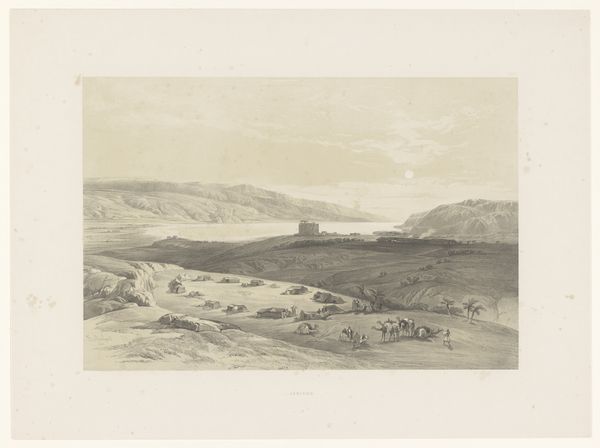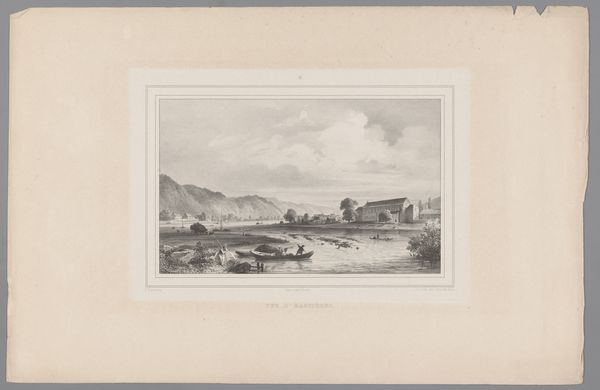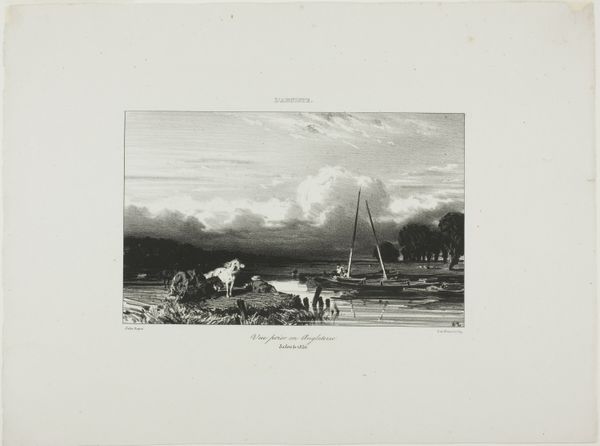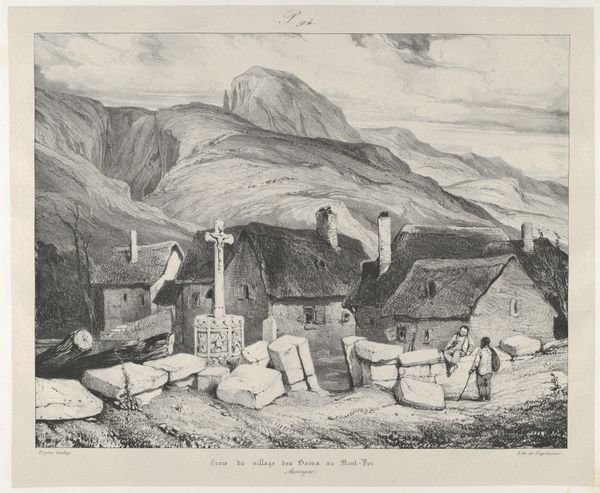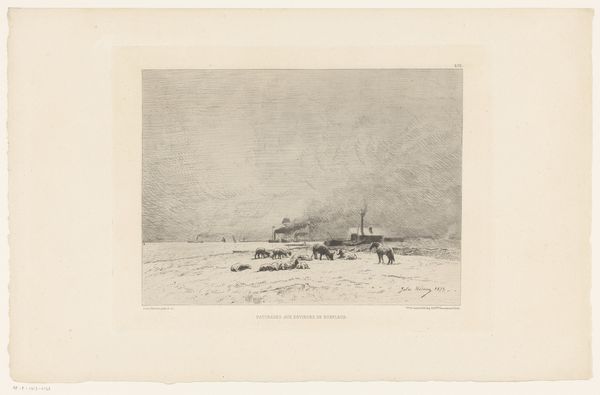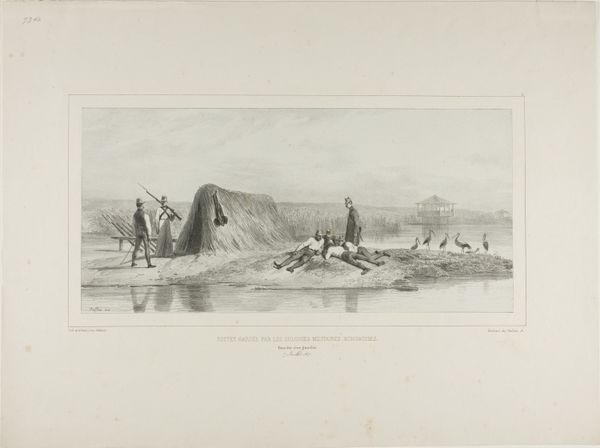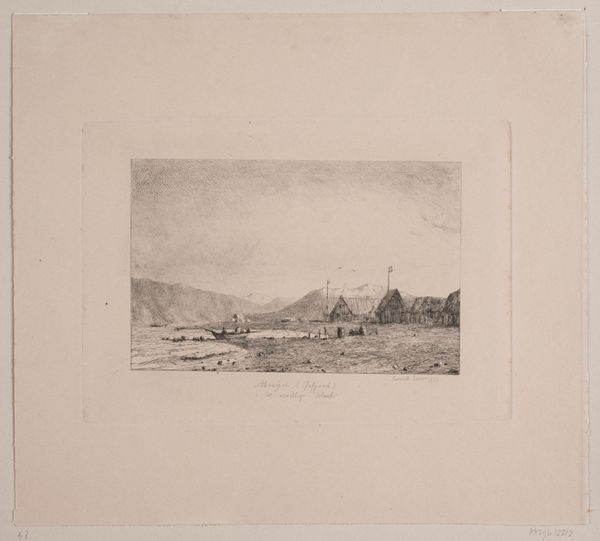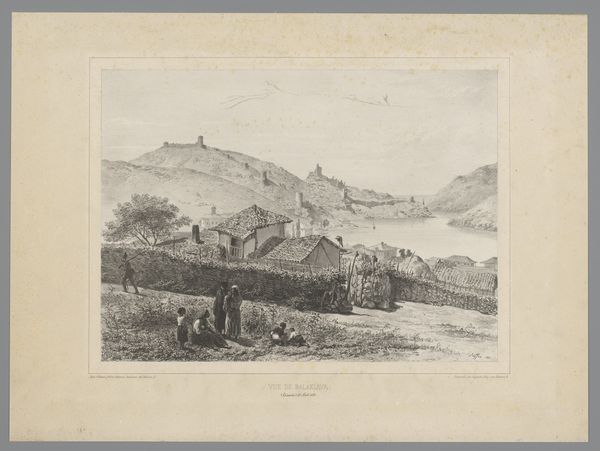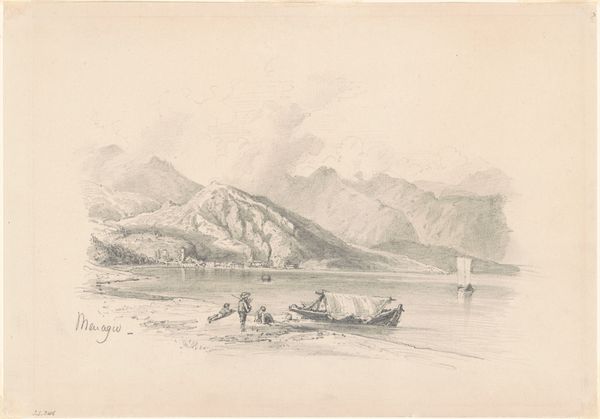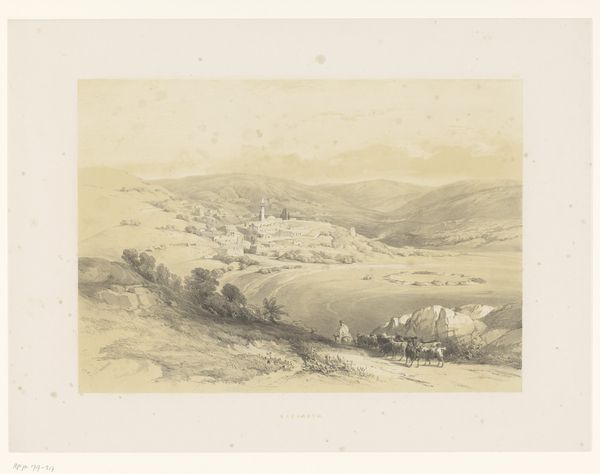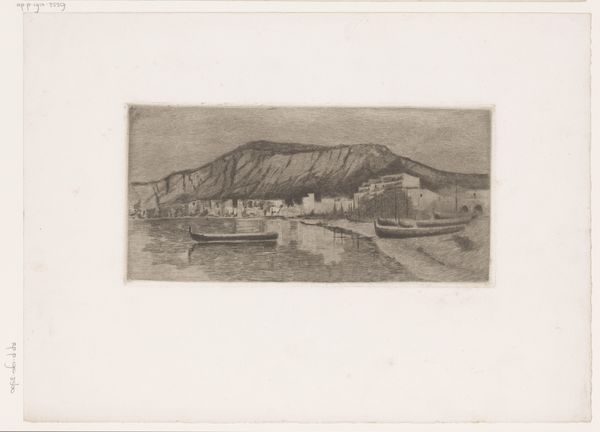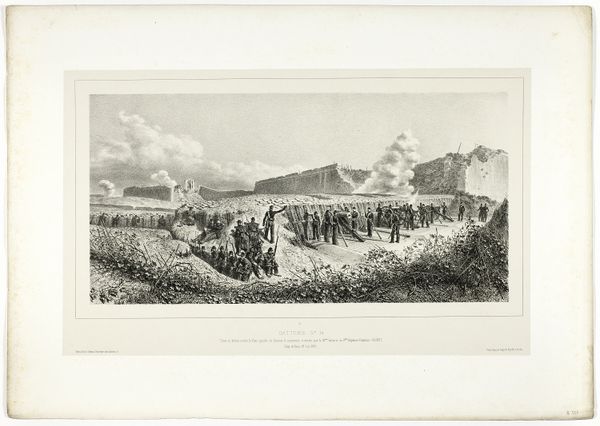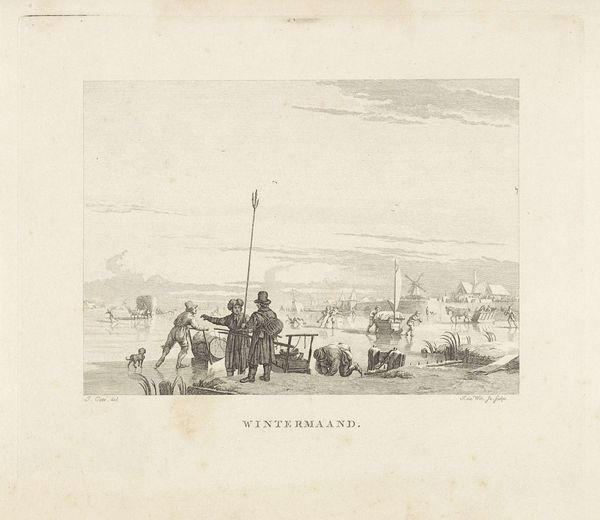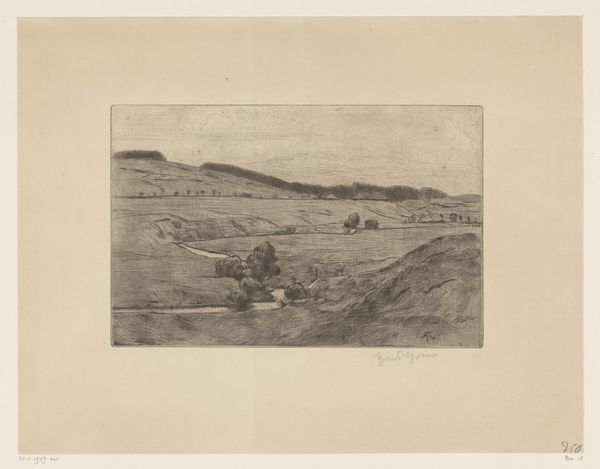
View of the Village and Bay of Yalta, Crimea, August 15, 1837 1840
0:00
0:00
drawing, lithograph, print, paper
#
drawing
#
16_19th-century
#
lithograph
# print
#
landscape
#
paper
#
romanticism
Dimensions: 192 × 335 mm (image); 192 × 335 mm (primary support); 345 × 459 mm (secondary support)
Copyright: Public Domain
Editor: So, here we have Auguste Raffet’s “View of the Village and Bay of Yalta, Crimea, August 15, 1837," a lithograph from 1840. There's something very serene and picturesque about it, like a postcard, even though the everyday lives of the people working on the shore are clearly visible. What stands out to you? Curator: The prominent oxen cart and the gathering of what appears to be firewood immediately call to mind images of labor and industry, common tropes in Romantic landscapes that were more about ideas than capturing the world as it was. But let’s consider the date: 1837. Do you notice how Raffet depicts this corner of Crimea just before it became a popular destination for the Russian elite? What meanings might the oxen hold for Russians reading this print in, say, St. Petersburg? Editor: That's a great point. So, maybe the ox symbolizes the 'old ways' being supplanted. Are those wrecked boats also part of that symbolic language? Curator: Exactly! This isn't merely a record of Yalta. The fragments of ship—what remains of them – could be stand-ins for industries or a particular time nearing its end, while also speaking to an older visual motif of ‘shipwreck.’ This connects, however tangentially, with a broader meditation on ruin, time, and transition. Notice how the sharp lines on the wrecked wood draw your eye into the composition and connect foreground to background. What sort of psychological or emotional effect does that have, do you think? Editor: It pulls me into the scene more intensely, as though those fragments of wood express tension between backgrounded nature and foregrounded daily life, and thus stand between two worlds that otherwise might appear far more harmonious. It is about seeing the Crimean landscape, yes, but understanding the moment in history more intensely. Curator: Precisely! That intense moment is the locus of how symbol interacts with our psyches to create and solidify meaning. We are seeing with, but also reading into, Raffet’s image. Editor: That has helped me consider this tranquil Romantic scene in a whole new light, understanding it less as passive and more as a cultural statement. Curator: And for me, it reinforces how landscapes function as repositories of collective cultural memory.
Comments
No comments
Be the first to comment and join the conversation on the ultimate creative platform.
